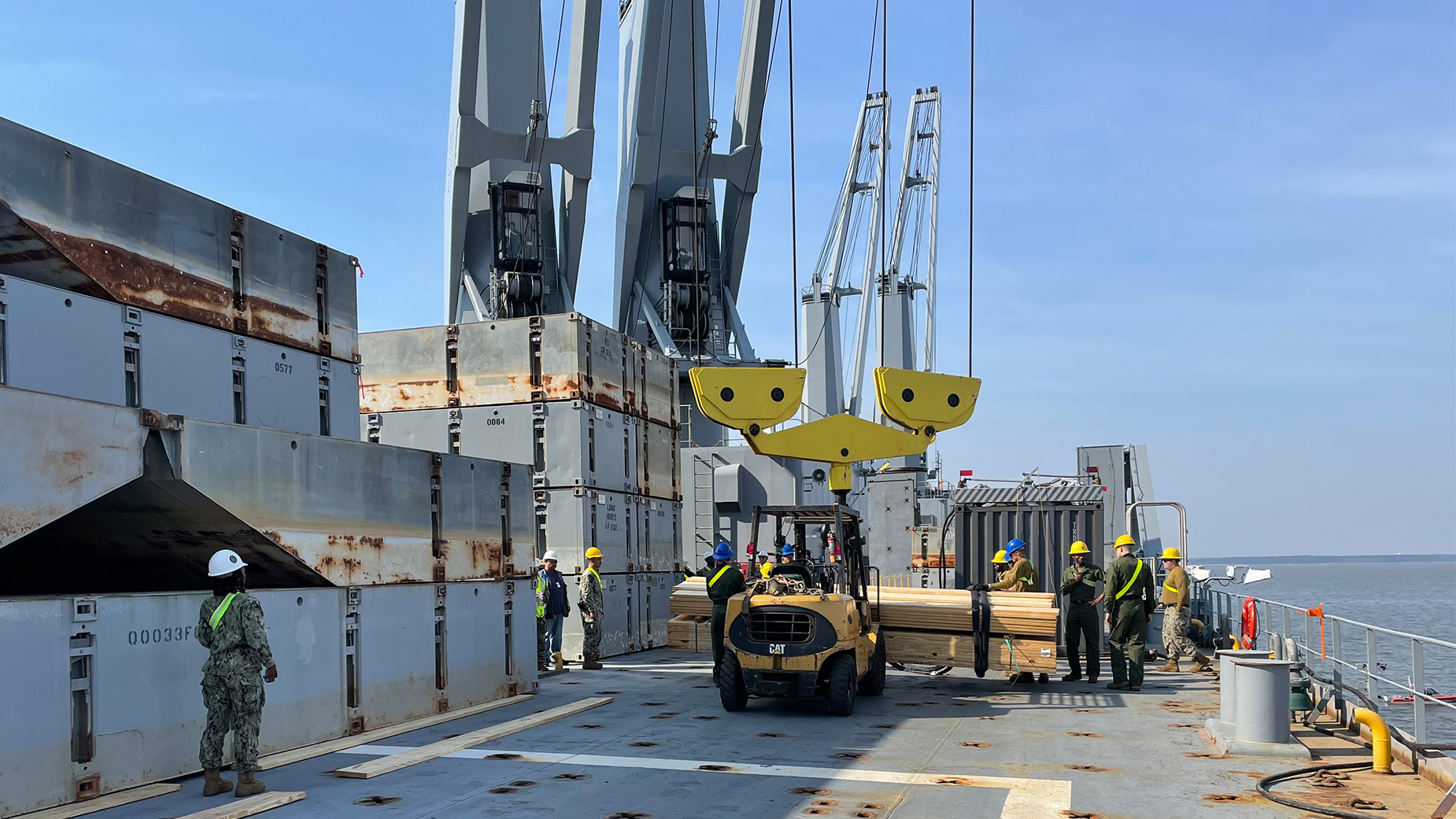Friday, the MV Roy P. Benavidez was uploading the equipment the U.S. Army 7th Transportation Brigade will use to build a floating pier system off the coast of Gaza.
President Joe Biden announced at the State of the Union Address that the U.S. will supply humanitarian aid by sea in the coming months. The plan is coming together quickly, said Navy Capt. Jamie Murdock commodore of Military Sealift Command Atlantic.
“The most impressive thing is we've only been going about a week, ten days, at this point since, since the word go. The ship is close to ready to go. Stuff is moving on already,” he said.
The crew of 44 civilian merchant mariners received the call to report for duty last Friday. Their unit is designed to be ready within 5 days.
“So, the ship's crew is adjusting to any needs that the military has. It's one of those things. Stand by to stand by,” said Brian Carroll, the ship’s civilian vessel master, which is their term for captain.
The Benavidez can carry up to 22,000 tons. The largest portion of the cargo are a series of 50,000 pound sections of floating causeway. Once unpacked, the pieces can be floated and assembled by the U.S. Army next to the ship to form a football-field size staging area for unloading equipment and supplies. The cargo can then be sailed to a separate mobile pier assembled by the Army, where the relief aid can be offloaded onto the beach in Gaza.
The president has ordered that no U.S. troops set foot in Gaza. The U.S. still has to work out major details, such as who will transport the aid inside Gaza and who will anchor the mobile pier to the shore.
The Benavidez will leave the Newport News Marine Terminal for the Eastern Mediterranean in the coming days. They will meet up with Army boats which left earlier in the week. While the Benavidez can cross the Atlantic and arrive off the coast of Gaza in roughly 15 days. The Army boats are expected to take up to a month to arrive. The Army will then begin a month-long project to build a large floating dock and a separate floating pier to ferry food and water to the region.
Produced with assistance from the Public Media Journalists Association Editor Corps funded by the Corporation for Public Broadcasting, a private corporation funded by the American people.





